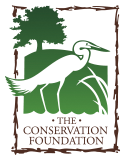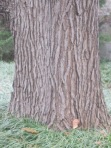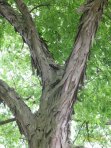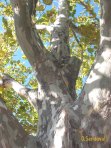Our communities have lost so many trees courtesy of the shiny green devil known as the Emerald Ash Borer. But the loss of our ashes presents an opportunity to replace them with beautiful native trees. The latest Conservation@Home blog post by Denise Sandoval give lots of great recommendations:
Replacing an Ash? Here are some native tree recommendations.
Here are some native tree recommendations for replacing your Ash, as requested by one of The Conservation Foundation Facebook followers. As always, select the best tree according to your site conditions, space available, ornamental value, site usage, wildlife habitat, maintenance plans, and to support diversity. For diversity, plant a variety of species in an area to reduce the impacts of environmental stresses (invasive species, climate change, weather extremes). The Morton Arboretum recommends no more than 30 percent of trees in an area come from the same tree family. For example if more than one third of the trees in your neighborhood or subdivision are Maples (Silver, Box Elder, Norway, Maple cultivars), don’t plant any more. Also purchase locally grown plants to ensure the plants are adapted to our weather conditions. For example a Redbud (Cercis canadensis) from Georgia is not adapted to the same conditions as a Redbud from Northern Illinois. Besides selecting the best tree and location, remember to properly plant, mulch, and water your new tree.
Native Street Trees:
 Hackberry (Celtis occidentalis) – I recommend this tree for its unusual bark (see photo) and wildlife value, especially birds who love to eat its berries. It can tolerate a range of soil and street conditions, is a medium-fast grower and is a medium to large in size. It can develop leaf galls (which look like huge pimples) along with witches broom, but these are usually not harmful and for the most part, can be ignored.
Hackberry (Celtis occidentalis) – I recommend this tree for its unusual bark (see photo) and wildlife value, especially birds who love to eat its berries. It can tolerate a range of soil and street conditions, is a medium-fast grower and is a medium to large in size. It can develop leaf galls (which look like huge pimples) along with witches broom, but these are usually not harmful and for the most part, can be ignored.
Kentucky Coffee Tree (Gymnocladus dioicus) – The roasted seeds were brewed by Native Americans and early settlers, hence it’s name. Kentucky Coffee trees are either male or female. Female trees flower in spring and produce long seeds pods when pollinated by a male tree. Both have compound leaves, large leaves composed of smaller leaves called leaflets and a neat bark. This tree loses its leaves early in fall and grows new leaves late in spring, so don’t be alarmed by this. It can tolerate of range of soils and street conditions but prefers moist soils, and grows large in size. Male trees are usually selected as street trees, but if you have room in your yard, grow both to provide wonderful winter interest and flowers for bees.
Northern Catalpa (Catalpa speciosa) – This tree bring memories of my childhood, since we often played with the long seed pods which fell from our neighbor’s tree. Beside the long seeds pods, a Catalpa can be identified by its large leaves and beautiful white fragrant flowers in late spring. Although it is native to southern Illinois, it grows well in our area. It’s a little messy since it drops its flowers, pods and some branches during storms, but it can tolerate a range of moisture conditions and is a fast grower. The white flowers make it a worthwhile tree to grow despite its messiness. It is a medium to large tree.
Below are other native trees (besides Redbuds and Serviceberries) available from local nurseries and plant sales. A link to the www.illinoiswildflowers.info site is provided with each to learn more, but please take a look at other photos and descriptions from the Morton Arboretum, Missouri Botanical Gardens or LBJ Wildflower Native Plant Database websites, in additional to nursery catalogs, and books. I especially like “Native Trees of the Midwest” by Weeks, Weeks and Parker. If you have any other native tree recommendations or resources for information, please add them to comments section below. Thank you. Denise Sandoval Conservation@Home assistant
Small-medium size trees:
Medium to large trees:
Bur Oaks and other native oaks. Also see blog article: Protect and Preserve our Native Oaks for more info.
Shagbark HIckory and other hickory species





